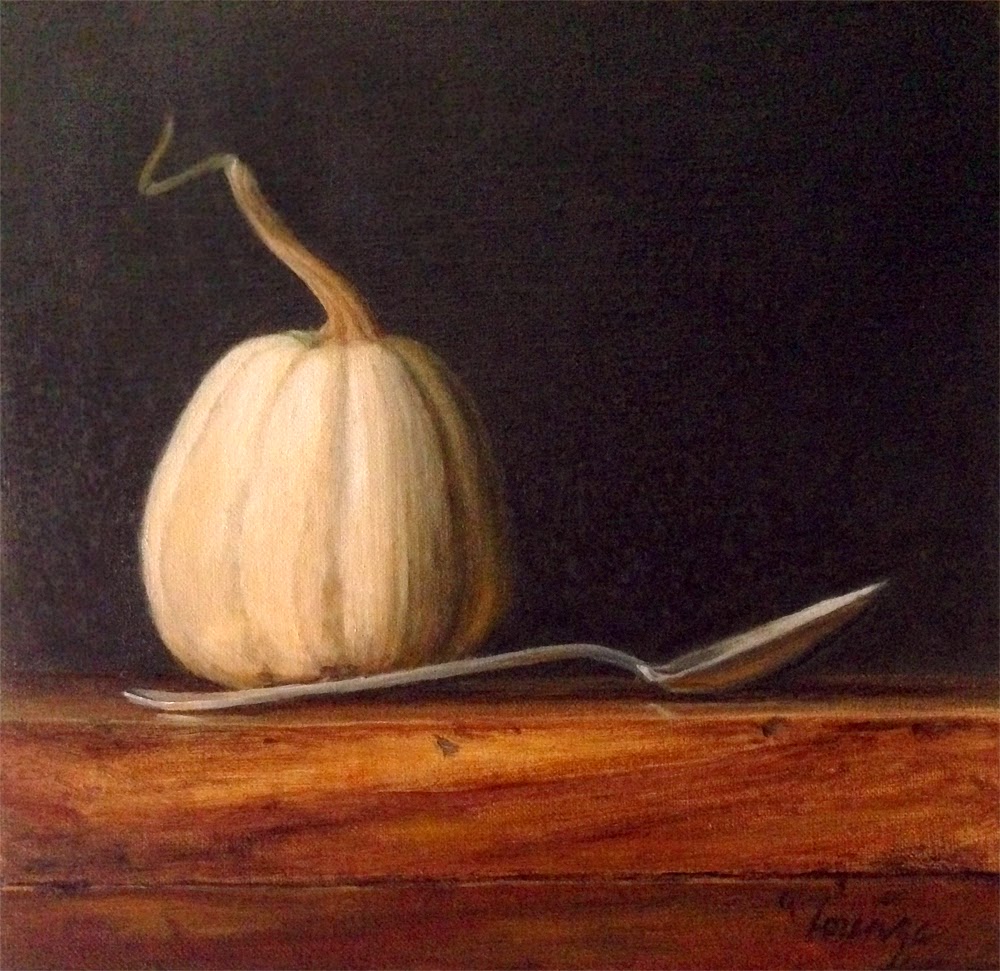We've all been warned against "getting too bogged down in the details!" Certainly, getting bogged down for any reason is not a good thing. But when I set up a still life, the details - subtle differences and contrasts - are what intrigue and challenge me.
Details add interest and richness to a painting. I found this baby cabbage at a farmer's market last fall. Cabbage: a ball of green. But this one was only the size of a softball, with light green veins, hearty leaves and an awesome, blueish cast on the outer leaves. Beautiful!
 |
| Vintage Cabbage ©2014 Dorothy Lorenze |
Originally, the wine crate's job was simply to bring the arrangement to eye level. But, like an understudy who catches a break, the finer points of the crate caught my attention and it became an important, supporting cast member.
Plus this crate had lettering! I considered leaving it out, but the type not only added to the composition, it suggested a title: Vintage Cabbage. Anyway, who doesn't want to hand-paint classical letter forms... upside down!
The fascinating thing about wood grain is it seems so random. You could almost fake it, but it's actually easier and more satisfying to render it fairly accurately.
Why?
DETAILS
Each piece of wood has character that's created by patterns and lines that distinguish it from another. The patterns can be simplified to be less botanically precise, but it's most interesting when the wood is observed and rendered at least somewhat faithfully. Because details convey the character of an object. Always.This painting includes a different wooden box. The specifics of the wood grain, including its blemishes, describe the more polished, but antique, box that it is.
 |
| Munchkin and Silver Spoon ©2014 Dorothy Lorenze |
Details can help objects relate to one another and keep the viewer engaged. In this close up, the pumpkin's creamy color is reflected in the spoon handle as well as the top of the box. There is also a bit of reflected light from the spoon brightening the under curve of the pumpkin.
 |
| detail - Munchkin and Silver Spoon |
What tends to happen is, just about the time I'm thinking, "Holy crap, how many more veins do I need to paint to make this look like a cabbage!?" I'll notice an unexpected color in a shadow, or some other artistic surprise, and it's kind of thrilling all over again.
Apparently, that's why I paint still life... for the thrills!
If you'd like to know more about why I enjoy still life painting, please take a look at my article on the Craftsy website for art and craft instruction: 10 Reasons to Paint Still Life. Enjoy!
Thanks for joining me on my painting journey.